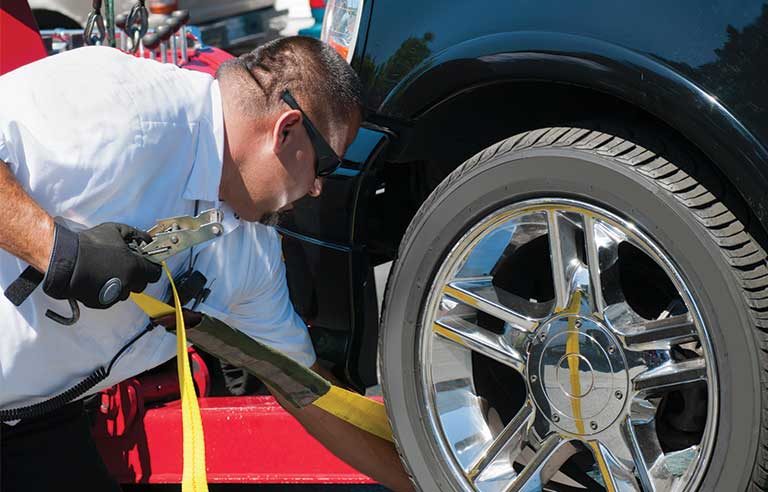‘Largely overlooked’: Report details high death, injury rates among tow truck workers

Morgantown, WV — Workers in the motor vehicle towing industry face an on-the-job fatality risk nearly 15 times greater than workers in all other private industries, according to a recent study from NIOSH.
Analyzing data from the Bureau of Labor Statistics, NIOSH researchers found that 191 motor vehicle towing workers were killed between 2011 and 2016, resulting in an annual rate of 42.9 deaths per 100,000 full-time equivalent workers. For all other industries, that rate was 2.9 per 100,000 FTEs.
Additionally, the annual nonfatal injury rate among motor vehicle towing workers during that same period was 204.2 per 10,000 FTEs – more than double the rate of 98.2 for all industries. Other findings:
- Motor vehicle incidents were the leading cause of towing industry worker deaths, accounting for 64 percent. Contact with objects and equipment (17 percent) was second.
- Contact with objects and equipment (34 percent) and overexertion and bodily reaction (32 percent) were the leading causes of nonfatal injuries.
- Men accounted for 97 percent of the deaths and 94 percent of nonfatal injuries.
“Until now, nonfatal injuries and deaths in the motor vehicle towing industry have been largely overlooked,” NIOSH states. “The findings from this study underscore the need for additional research and tailored prevention efforts.”
The Canadian Center for Occupational Health and Safety offers several tips for workers who tow vehicles for roadside assistance. Among them:
- Survey the area for hazardous conditions, especially near merging lanes or intersections where moving vehicles are nearby.
- Use sufficient warning lights or pylons around the pickup area. Avoid using flares in case of fuel leaks.
- Wear high-visibility personal protective clothing.
- Tow, rather than push, a vehicle whenever possible.
- Double-check a vehicle after it is rigged. Ensure all cables or connections are secure before driving.
Post a comment to this article
Safety+Health welcomes comments that promote respectful dialogue. Please stay on topic. Comments that contain personal attacks, profanity or abusive language – or those aggressively promoting products or services – will be removed. We reserve the right to determine which comments violate our comment policy. (Anonymous comments are welcome; merely skip the “name” field in the comment box. An email address is required but will not be included with your comment.)

